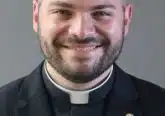A Question of Faith: Women Deacons?
Question: I have been told that women served as deacons in the early Church? If this is true, what was their role?
Answer: Instances of women serving as deacons in the early Church, especially in Syria, are referenced in various documents. However, evidence shows deaconesses did not have the same function as men ordained to the diaconate. These women had a complementary – rather than identical – role to the ordained clergy. Scripture, Church councils and other early Christian writings show that deaconesses served the community, were not ordained and had a limited liturgical and sacramental function.
Set Apart for Service
The word “deacon” comes from diakonia, the Greek word for “service.” The word took on special significance when the Apostles elected and ordained seven men to a life of service as recorded in Acts 6. The diaconate is thus Apostolic and one of the three Holy Orders (deacons, priests and bishops). Although the diaconate as a rank of Holy Orders seems to have been reserved to men from the beginning, in Romans 16:1, a woman named Phoebe is called a deaconess, likely indicating a particular role of service in the community. Not much context is given though, and her role is vague.
The Question of Ordination
The existence and role of deaconesses is more clearly found in Church documents beginning in the fourth century. The Council of Nicaea (325 AD) explained, “We mean by ‘deaconesses’ those who have assumed the habit, but who, since they have not hands laid upon them, are to be numbered only among the laity” (Canon 19). The Apostolic Constitutions (which is not actually from the Apostles but written around 375 AD in Syria) helps to distinguish the ordained deacon from the deaconess. Since deaconesses were not ordained, they did not have a role in the Liturgy and did not administer the chalice or read the Gospel.
Assisting at Baptism
Women deacons did have a particular responsibility: sacramental functions for the sake of propriety. St. Epiphanius of Salamis explained in the Fourth Century that the deaconess cared for women who were sick or injured and assisted adult women being baptized. In particular, because many converts were adults, women were needed to serve at the baptisms of other women because the sacrament was performed without clothing (signifying the death of the old self and the new birth in Christ). Baptism included anointing the body with oil, and the imparting of oil by a man on a woman was seen as improper.
As adult baptisms decreased with the growth of infant baptism, the need for deaconesses declined, fading almost totally out of existence by the turn of the millennium.
Complementarity Roles
To underscore their role, Pope Francis has compared the deaconesses of the early Church with women religious. Like the women of the past, women religious are called to a life of holiness and particular roles of leadership, but they do not receive Holy Orders.
While it is tempting to examine this question through the lens of power struggle, we are called to consider positions of leadership in the Church in the context of roles of service. Through this lens, we can discern how God has ordered His Church to live out the complementarity of women and men. While there have not been women deacons for more than a millennium, there continue to be service roles in the Church open to women.
Father David Endres is associate professor of Church history and historical theology at Mount St. Mary’s Seminary / The Athenaeum of Ohio.













